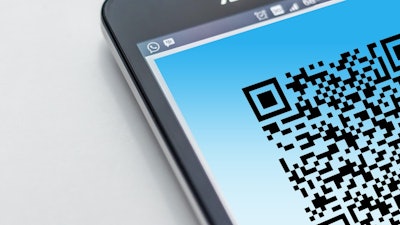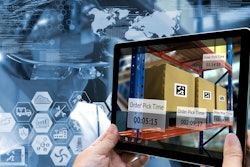
What makes some online marketplaces so successful? How have they turned retail (and logistics, for that matter) on its head? The answer is intelligence.
Thanks to digital technology and an expansive network infrastructure, some online marketplaces know more about the demand chain that it’s built between brands and consumers than most traditional retailers can possibly grasp. They know when customers consider a product by their clicks. They know where the product is located and the quickest way to get it into customers’ hands. They know if a customer liked the product based on reviews and has a fairly good idea if and when the customer will buy it again. And, in some situations, they even know if a customer used the product a while, then sold it to someone else—on an online marketplace.
These online marketplaces have fused digital marketplace with end-to-end intelligence, something that traditional retailers—for lack of a similar digital infrastructure—struggle to replicate. But, that’s changing.
It turns out, you don’t need to be a tech giant to know exactly when a product comes off the manufacturing line, where it’s physically located in a brick-and-mortar store, or when a customer tries, purchases and takes it home. The time is even coming when retailers, brands and others along the demand chain can gain insight—in real time—into how products of all types are transported, maintained, used, consumed, re-used and even recycled. All it takes is digital intelligence, integrated seamlessly and cost-effectively into products, packaging, processes and more. That infrastructure already exists.
Intelligence for the everyday
Intelligence comes in the form of tiny, wireless, digital stickers affixed to clothing, consumer packaged goods, pharmaceuticals, shipping containers—almost anything. If this sounds like the Internet of Things (IoT), it’s because it is, although this IoT is more expansive than the IoT that over-promised and under-delivered for decades. That old school IoT was more like an Internet of Expensive Things because the infrastructure it required—RFID tags, fixed readers, scanners, etc.—took extensive capital investment, not to mention frequent human intervention by people actually carrying RFID scanners, aiming them at products and initiating the kind of demand chain intelligence that should be autonomous.
The new Internet of Everyday Things, if you will, comprising trillions of goods (vs. the mere billions traversing the old school IoT), is made possible through the disposable, near-zero-cost, mass-produced, self-powering digital stickers—IoT Pixels—plus a network communications infrastructure with infinite scale.
The IoT Pixels speak Bluetooth, the now wireless communications standard. And, they communicate to a cloud-based sensing platform information such as location, condition and temperature. Selling perishables? The new IoT Pixels can determine the temperature of each item—or the container they’re shipped in—and relay that information manufacturers, distributors or retailers to help minimize waste and maximize customer satisfaction. Selling jeans? The same IoT Pixels can locate them in the store, even sense when they’ve been tried on, and with the permission of the consumer, communicate information about their authenticity, how and when they’re worn and when they might be re-sold.
That’s a lot of intelligence about everyday goods—the kind of intelligence often reserved for big tech companies. So, what is the infrastructure needed to collect, process and analyze this intelligence? It’s all the wireless access points—most of which now include Bluetooth—that retailers and others have spent years installing. (Not to mention all the Bluetooth radios people carry in their pockets in the form of smartphones).
If you’re a retailer that has installed WiFi in its stores so customers could get more information about products or check their email, or if you’re a healthcare provider that has built WiFi in its facilities to access patient records or order hospital supplies, or a consumer packaged goods (CPG) company with WiFi in its distribution centers and elsewhere, you’ve already created the necessary wireless infrastructure—the Internet of Everyday Things—needed to enable the Intelligence of the Everyday.
And, in a post-pandemic world—especially when it comes to retail—this intelligence will prove critical and potentially field-leveling. When society went into lockdown, consumers’ habits changed. Online retail sales jumped 32% year-over-year in 2020 and continued to surge 39% in Q1 2021, according to Digital Commerce 360. But, with vaccinations on the rise, experts such as McKinsey & Company anticipate more spending on out-of-home activity, especially among younger people.
Shopping is fun. Some innovative companies have proven they can attract consumers into engaging, physical spaces. And, there continues to be opportunity for brand-defining, in-person retail experiences, but to compete with online, retailers need access to the kind of intelligence their tech peers already enjoy—the Intelligence of the Everyday, made possible by the Internet of Everyday Things.
By leveraging an existing infrastructure of wireless communications and adopting smart, IoT Pixels, retailers can thrive, competing with tech-savvy giants (which will also evolve to embrace the Internet of Everyday Things) where it previously seemed impossible. Imagine continuous real-time inventory, or a check-out experience with no lines; customers simply walk out of the store and smart IoT Pixels communicate with the wireless infrastructure to complete the sale. Imagine products that re-order themselves, creating a loyalty bond with customers that drives predictable, recurring revenue.
All this is just the tip of the iceberg. When there’s intelligence built into everything, digital information—secure, private information—is accessible to everyone. All retailers benefit. So do pharmaceutical companies and healthcare providers that need to better track drugs, vaccines and supplies.
It’s a lofty vision, and one that requires fresh thinking by partners along the demand chain. But, it does not require a massive buildout of enabling network technology. The wireless, Internet of Everyday Things platform bridging physical and digital worlds is already around us.



![Pros To Know 2026 [color]](https://img.sdcexec.com/mindful/acbm/workspaces/default/uploads/2025/08/prostoknow-2026-color.mduFvhpgMk.png?auto=format%2Ccompress&bg=fff&fill-color=fff&fit=fill&h=100&q=70&w=100)







![Pros To Know 2026 [color]](https://img.sdcexec.com/mindful/acbm/workspaces/default/uploads/2025/08/prostoknow-2026-color.mduFvhpgMk.png?ar=16%3A9&auto=format%2Ccompress&bg=fff&fill-color=fff&fit=fill&h=135&q=70&w=240)






